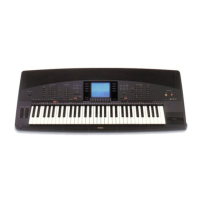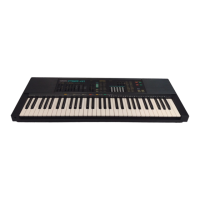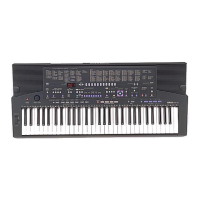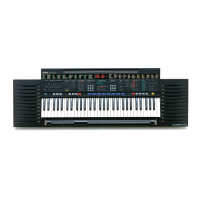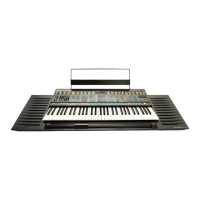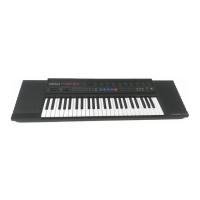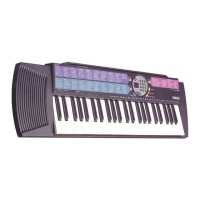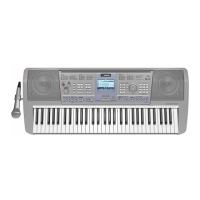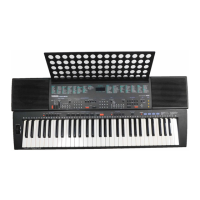
Do you have a question about the Yamaha PortaTone PSR-400 and is the answer not in the manual?
| Brand | Yamaha |
|---|---|
| Model | PortaTone PSR-400 |
| Number of Keys | 49 |
| Voices | 100 |
| Styles | 100 |
| MIDI | Yes |
| Speakers | Yes |
| ROM | Yes |
| Effects | Reverb, Chorus |
| Display | LCD |
| Power Source | AC Adapter or Batteries |
Guides for initial setup, power supply, and external connections.
Simplified procedures for operating basic instrument functions.
Detailed explanations of all instrument features and controls.
Supplementary information including MIDI, polyphony, troubleshooting, and system specifications.
Identification and location of PSR-400 top panel controls.
Identification of PSR-500 controls and features.
Description of the rear panel jacks and ports.
Using batteries or an AC power adaptor for instrument operation.
Connecting audio devices, foot pedals, and music stands.
How to choose and play different instrument sounds.
Applying and adjusting reverb depth for voices on the PSR-500.
Playing different voices with the left and right hands.
Playing two voices simultaneously across the keyboard.
Steps for using the auto accompaniment feature with styles.
Adding automatic harmony to melodies using the auto harmony function.
Turning the unit on/off and selecting operational modes.
Adjusting master volume and using the pitch bend wheel.
Setting transposition, tuning, and tempo for the instrument.
Choosing from the available accompaniment styles.
How to start and control the auto accompaniment playback.
Using fill-ins and selecting Normal/Bridge variations.
Methods for choosing voices using numeric buttons and the panel list.
Playing two voices simultaneously for a richer sound.
Adjusting the volume and octave for selected voices.
Adjusting the depth of reverb effects for voices.
Controlling panning and MIDI transmit channels for voices.
Adding automatic harmony to melodies based on chords.
Steps for recording melody lines into song memory.
Recording accompaniment chord patterns into song memory.
Playing back recorded melodies and chord sequences.
Recording short rhythmic or melodic sequences onto the multi pads.
Playback of recorded multi pad sequences.
Assigning and recording percussion notes to drum pads.
Playback of recorded drum pad assignments.
Configuring MIDI receive channels and clock synchronization.
Selecting between Remote Control and Multi Voice modes.
Data transmitted via MIDI OUT connector.
Receiving system exclusive data via MIDI.
How to select and play the built-in demonstration songs.
Understanding the MIDI IN and OUT connectors on the instrument.
Basic MIDI control principles and keyboard connections.
Information on the maximum number of notes playable simultaneously.
List of voices and their polyphony usage.
Checking for common issues like no sound or rhythm problems.
Advice on avoiding heat, vibration, and humidity.
Instructions for cleaning the exterior and service recommendations.
Steps to perform a system reset to resolve abnormal operation.
Technical specifications for the PSR-400/PSR-500 keyboard.

